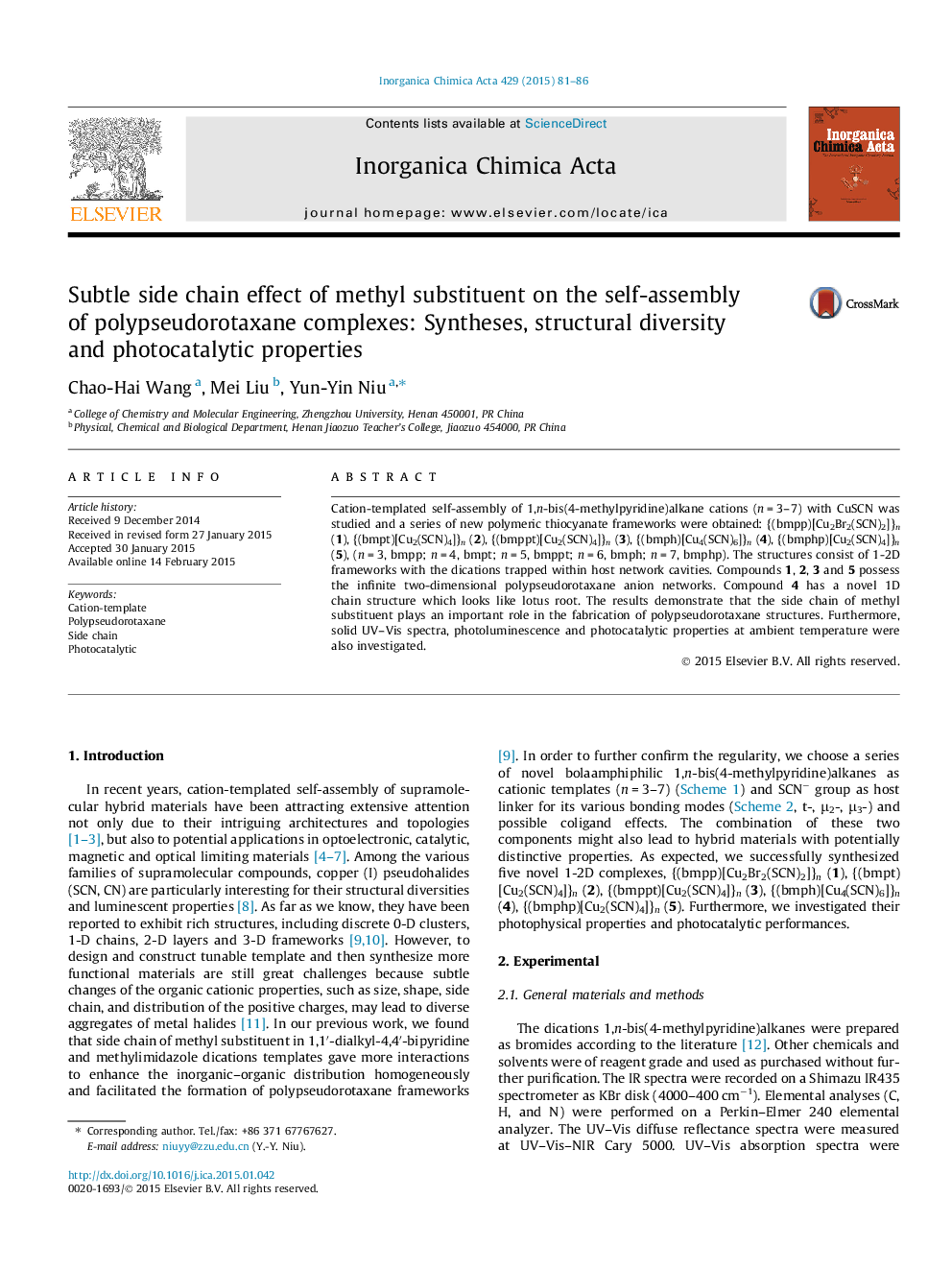| Article ID | Journal | Published Year | Pages | File Type |
|---|---|---|---|---|
| 1306610 | Inorganica Chimica Acta | 2015 | 6 Pages |
•The side chain effect in stoppers facilitates the fabrication of polypseudorotaxane.•The photocatalytic performances of these compounds are well.•Complexes 2, 3 and 5 show strong photoluminescence.
Cation-templated self-assembly of 1,n-bis(4-methylpyridine)alkane cations (n = 3–7) with CuSCN was studied and a series of new polymeric thiocyanate frameworks were obtained: {(bmpp)[Cu2Br2(SCN)2]}n (1), {(bmpt)[Cu2(SCN)4]}n (2), {(bmppt)[Cu2(SCN)4]}n (3), {(bmph)[Cu4(SCN)6]}n (4), {(bmphp)[Cu2(SCN)4]}n (5), (n = 3, bmpp; n = 4, bmpt; n = 5, bmppt; n = 6, bmph; n = 7, bmphp). The structures consist of 1-2D frameworks with the dications trapped within host network cavities. Compounds 1, 2, 3 and 5 possess the infinite two-dimensional polypseudorotaxane anion networks. Compound 4 has a novel 1D chain structure which looks like lotus root. The results demonstrate that the side chain of methyl substituent plays an important role in the fabrication of polypseudorotaxane structures. Furthermore, solid UV–Vis spectra, photoluminescence and photocatalytic properties at ambient temperature were also investigated.
Graphical abstractWe report five novel extended supramolecular polymers based on CuSCN and 1,n-bis(4-methylpyridine)alkane cations. Compounds 1, 2, 3 and 5 possess the infinite two-dimensional polypseudorotaxane anion networks. Compound 4 has a novel 1D chain structure which looks like lotus root.Figure optionsDownload full-size imageDownload as PowerPoint slide
